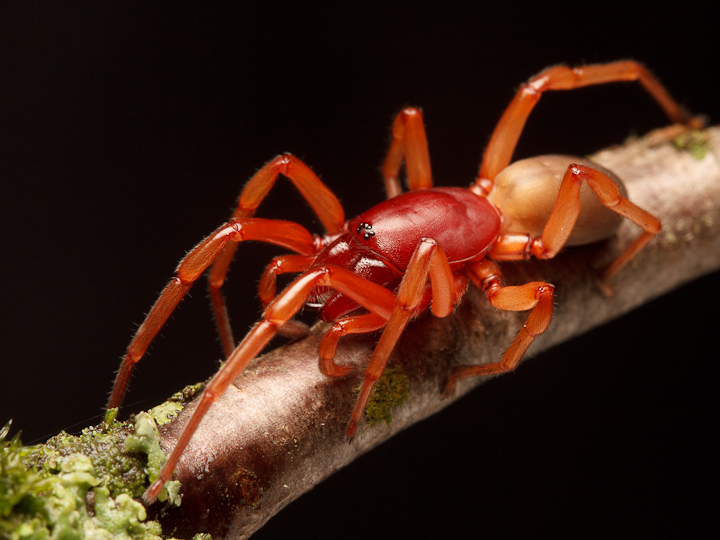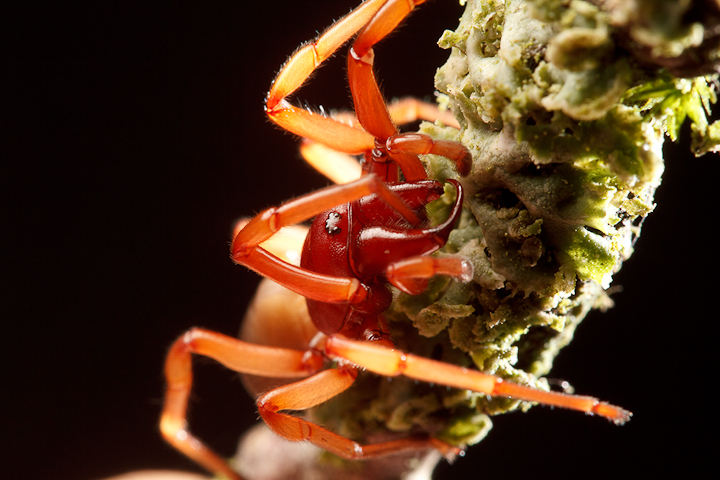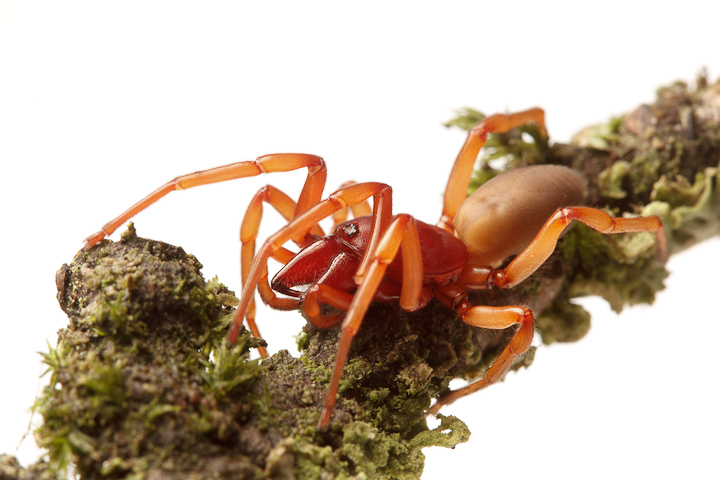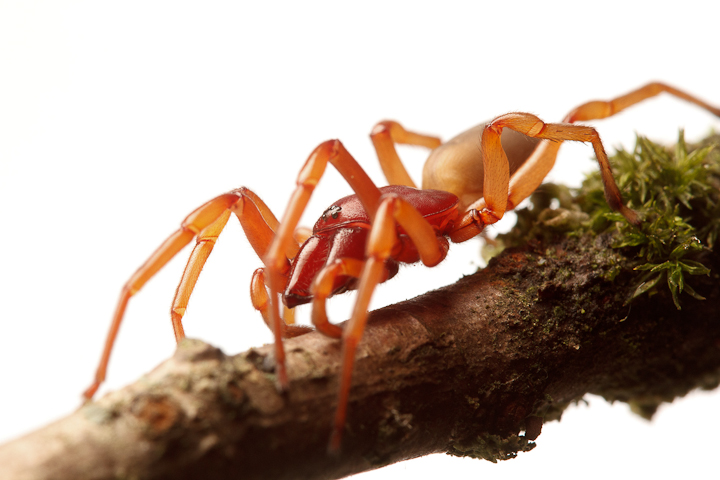For the very last post of Arachtober, I thought I would take some shots of the Halloweeniest spider on the west coast, Dysdera crocata. These orange and red beauties are specialist predators of terrestrial isopods (pillbugs) and have fangs equal to the task of envenomating these armoured prey. 






Great photos. Thanks for posting them.
Great photos and info. Thanks for posting.
Thanks!
I haven’t commented in ages, Sean but I still read and view your blog so first, a big thank you for continuing to post! Your photos of this spider are awesome!! The black background is understandable from shooting at night, but how’d you get the white background shots??
About the woodlouse spider, how common would you say it is? At the place I’ve lived in for 15 years now, I’ve only seen a single individual. Our backyard is quite shady and wooded and woodlice and pillbugs abound. Our house is on a slope and the back is partially below ground level so the three back door steps rise to meet ground level. Any night, I can sit on the steps and find countless woodlice from tiny new ones to full grown crawling about and on the lower walls near the soil. I like sitting outside when it’s night, enjoying the quiet (as well as visiting raccoons).
I love shooting bugs, moths and spiders then too as there’s always lots to be found, being attracted to the outside light, even if the selection isn’t as varied as I wish for. So I’m on the lookout for different bugs to shot and spiders being my favourite. But as I’ve said, I’ve only ever seen one of this species.
I remember her wel too because of her huge chelicerae, the biggest I’d ever seen on a spider before or since. If woodlouse spiders are fairly common, I feel I’ve been cheated! 😉 Or is it possible that smaller immature ones aren’t as colourful so I might’ve missed them before?
Thanks Julie! They seem to be more often found where there is an abundance of woody debris for shelter. We often find them above beaches, but they are certainly not common.
These were all shot at home, and the background in the black shots is a black coat without any light hitting it. At f13, this goes to black. The white background is the white painted wall with a second flash aimed at it. Basically this technique: http://ibycter.com/2013/07/16/cheapskate-tuesday-24-on-white-in-situ/
Fantastic stuff (as usual) Sean. Those spiders are sure impressive!